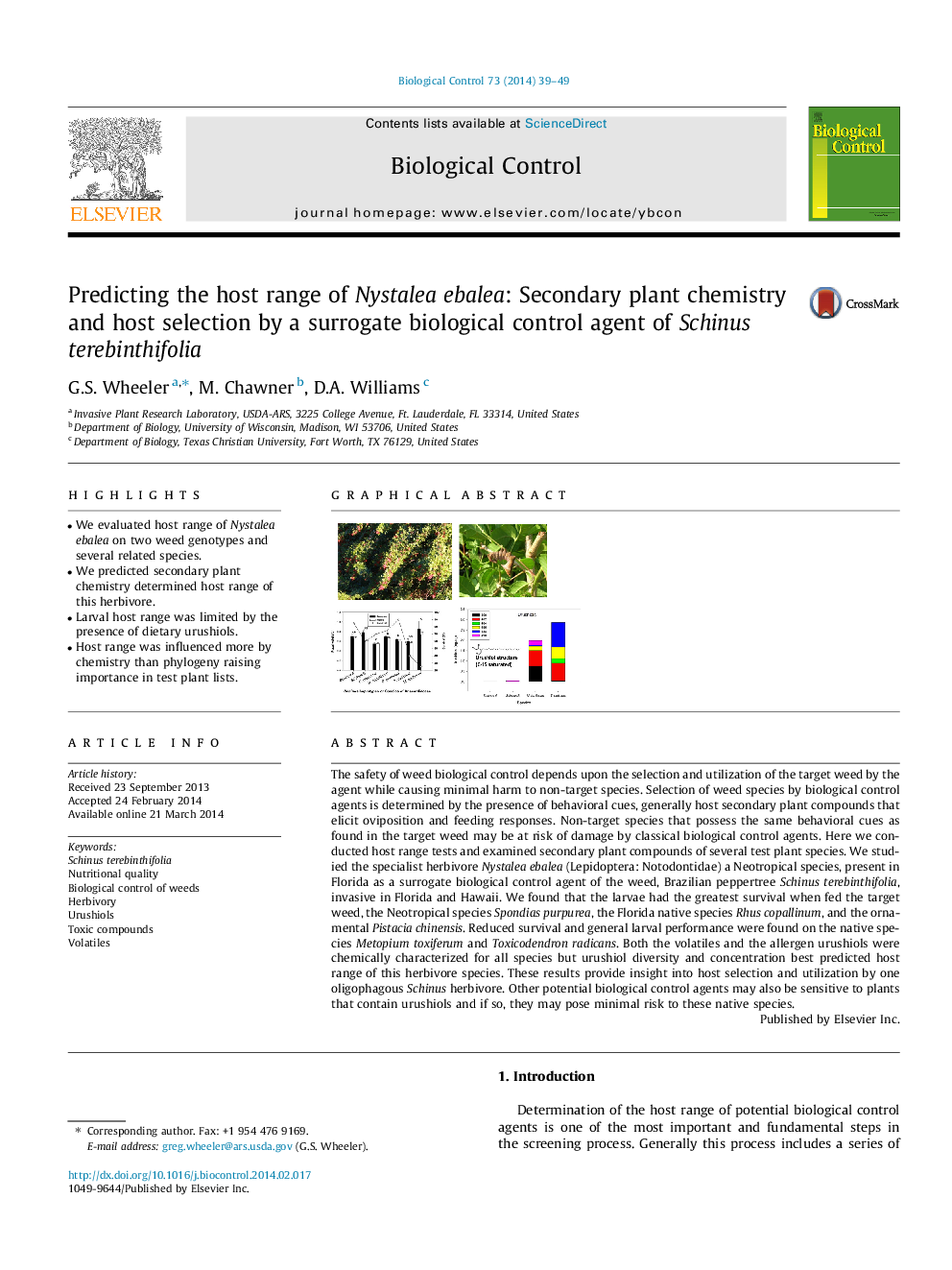| کد مقاله | کد نشریه | سال انتشار | مقاله انگلیسی | نسخه تمام متن |
|---|---|---|---|---|
| 4503918 | 1624261 | 2014 | 11 صفحه PDF | دانلود رایگان |

• We evaluated host range of Nystalea ebalea on two weed genotypes and several related species.
• We predicted secondary plant chemistry determined host range of this herbivore.
• Larval host range was limited by the presence of dietary urushiols.
• Host range was influenced more by chemistry than phylogeny raising importance in test plant lists.
The safety of weed biological control depends upon the selection and utilization of the target weed by the agent while causing minimal harm to non-target species. Selection of weed species by biological control agents is determined by the presence of behavioral cues, generally host secondary plant compounds that elicit oviposition and feeding responses. Non-target species that possess the same behavioral cues as found in the target weed may be at risk of damage by classical biological control agents. Here we conducted host range tests and examined secondary plant compounds of several test plant species. We studied the specialist herbivore Nystalea ebalea (Lepidoptera: Notodontidae) a Neotropical species, present in Florida as a surrogate biological control agent of the weed, Brazilian peppertree Schinus terebinthifolia, invasive in Florida and Hawaii. We found that the larvae had the greatest survival when fed the target weed, the Neotropical species Spondias purpurea, the Florida native species Rhuscopallinum, and the ornamental Pistacia chinensis. Reduced survival and general larval performance were found on the native species Metopium toxiferum and Toxicodendron radicans. Both the volatiles and the allergen urushiols were chemically characterized for all species but urushiol diversity and concentration best predicted host range of this herbivore species. These results provide insight into host selection and utilization by one oligophagous Schinus herbivore. Other potential biological control agents may also be sensitive to plants that contain urushiols and if so, they may pose minimal risk to these native species.
Figure optionsDownload as PowerPoint slide
Journal: Biological Control - Volume 73, June 2014, Pages 39–49